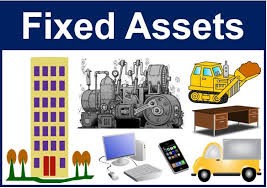
Fixed assets are items that are used in your business’s ongoing operations for longer than a year. These items should not be “expensed” or shown on the Profit and Loss Statement; instead they should be recorded on the Balance Sheet as assets. They are expensed over time through depreciation. Examples of Fixed Assets are:
- Machinery and equipment
- Furniture and fixtures
- Vehicles
- Computers and Software
- Land
- Buildings
- Building Improvements
- Leasehold Improvements
Fixed Assets are recorded on the Balance Sheet at the purchase price plus any installation costs needed. Once a Fixed Asset is put into service, except for land, it begins to lose value. This loss in value is accounted for with Depreciation (for tangible assets) or Amortization (for intangible assets like software). Depreciation and Amortization are non-cash expenses in that they are included in your Profit and Loss Statement even though there is no cash transaction.
Different Fixed Assets have different useful lives so are depreciated over different periods. There are a number of depreciation methods, but the two of the most common are:
- Straight-line depreciation is the simplest. Take the original cost of the Fixed Asset, subtract any expected Residual Value (if you think you will be able to sell the asset once you are no longer using it), and divide the result by the number of years you expect to use the asset.
- For example, you purchase a computer for $2,000 and expect to use it for three years, after which you think you can sell it for $200. The annual Depreciation Expense will be $600.
- ($2,000 – $200) / 3 = $600
- Unit of Production method us often used for machinery used in production. Take the asset cost less any residual value and divide that by the number of units of production expected from the machine. Then multiply the Per Unit Depreciation expense by the actual number of units produced during that period.
- For example, you purchase a printing press to print flyers for $10,000 and expect to be able to sell it for $1,000 when you dispose of it. The press will be able to print 100,000 units over its useful life. The per unit of depreciation will be .09 (nine cents).
- ($10,000 – $1,000) / 100,000 = .09
- During the first full year of operation, you print 10,000 flyers. The depreciation expense for that year will be $900.
- For example, you purchase a printing press to print flyers for $10,000 and expect to be able to sell it for $1,000 when you dispose of it. The press will be able to print 100,000 units over its useful life. The per unit of depreciation will be .09 (nine cents).
The IRS has rules for fixed assets and depreciation, and those rules can change. It is important to work with an accountant who understands the proper way to classify fixed assets and the most beneficial method of depreciation.
